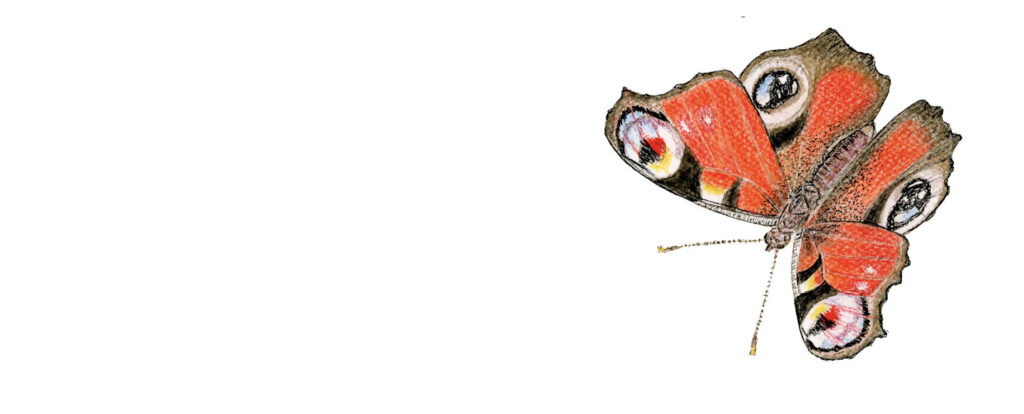
My butterflies
The first part
The butterfly emerging in its final form – how perfect, beautifully colored – is a miracle, an aristocrat on our planet. Most of them live shortly but can manage to present their flawless beauty to the world.
Painting a real butterfly portrait is a serious challenge because the map of its wings and the combination of colors are often difficult to repeat. Each of them, apart from the features of their species, has individual features that should be noticed and appreciated in concentration.
But first, a few expert words about butterflies.
Butterflies are the most popular group of animals belonging to the insect group. There are daytime butterflies and nighttime butterflies – moths. All the butterflies are known scientifically as Lepidoptera, meaning scaly wings, because their wings are covered with tiny, overlapping scales that create unusual patterns and colors. So far, about 200,000 species of Lepidoptera have been known, of which only a tenth are daytime moths and the rest are nighttime moths. It would seem that daytime butterflies are more beautiful, better colored. Nothing could be more wrong! They are fascinating, unusual, often even artistic in their shape and color.
Butterflies, due to their huge number and variety, took over the ability to adapt to various living conditions. And so they took almost all terrestrial environments: from the arctic tundra to the peaks of high mountains, as well as tropical jungle and mangrove swamps. The unusual life cycle of a butterfly, the miracle of its birth, the precision of its shapes, unique design, and color for each species, intrigue the entire world of science, but also millions of butterfly lovers around the world.
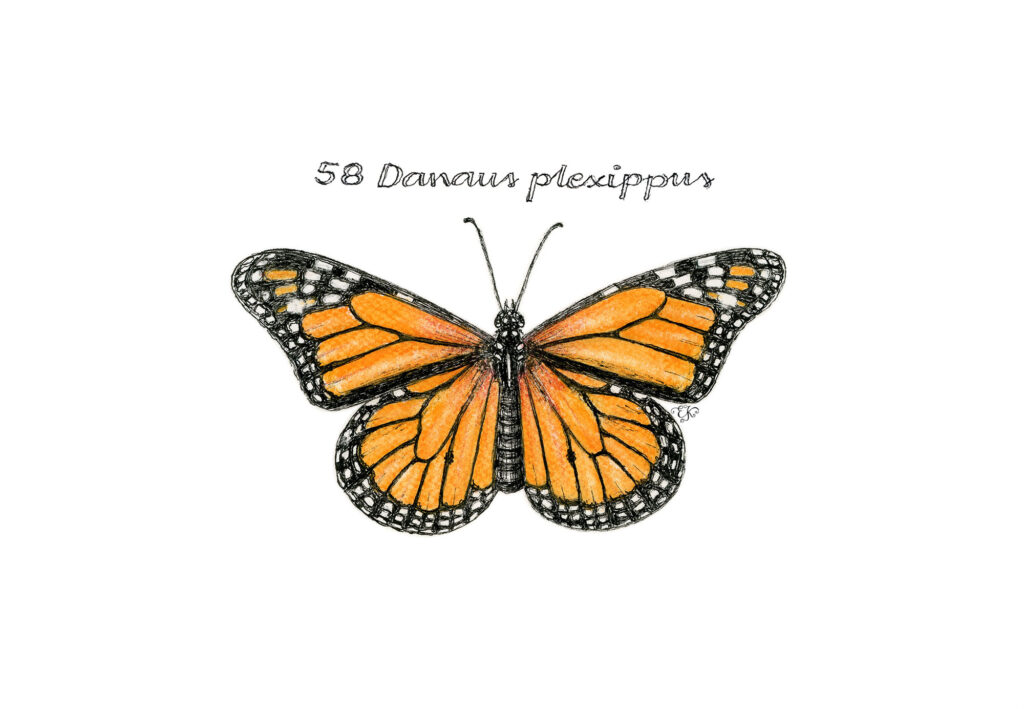
Can a fragile, delicate butterfly be associated with strength? The strongest butterfly in the world is Danaus plexippus, with a wingspan of 7.5 to 10 cm. This butterfly has become known to the world as the Monarch because populations from North America go through mass migrations. In autumn, butterflies flying south can travel up to 4,000 km. These are extraordinary butterflies that constantly inspire scientists from around the world to observations. During their travels, they orient themselves on the way using the angle of incidence of sunlight, and on cloudy days they can maintain a constant direction of flight, using the magnetic sense. The monarch is already a well-known wanderer, and its range has expanded from its native America to Indonesia, Oceania, and the Canary Islands, and has even established colonies in the Mediterranean countries.
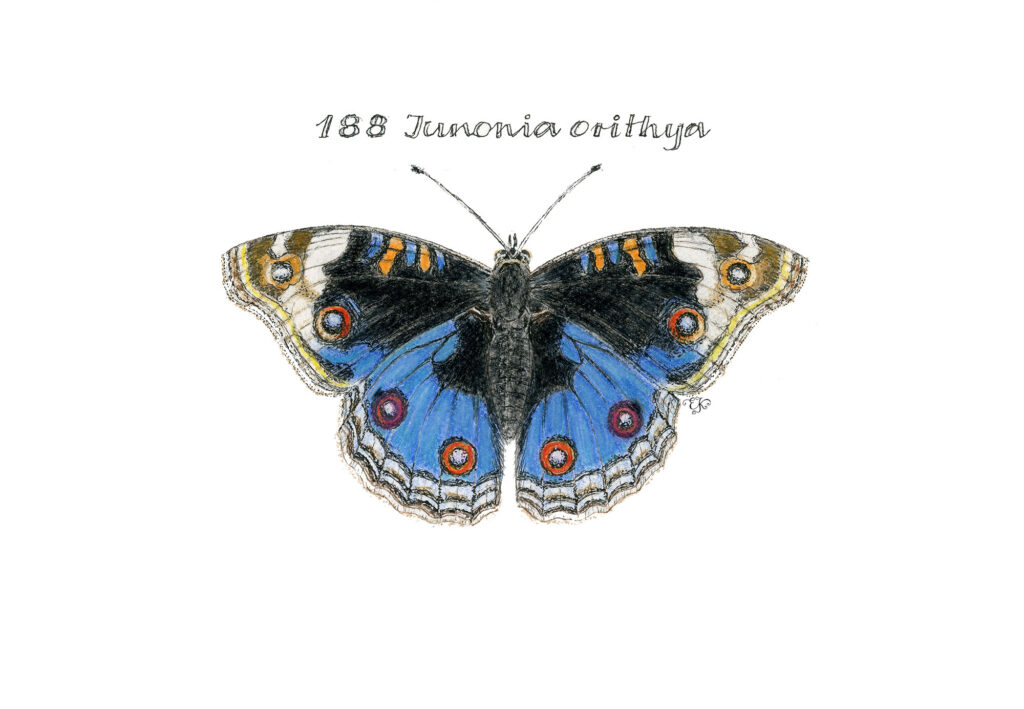
The shimmering colors of the Junonia orithya – male took on beautiful colors of black and strong blue with accessories in the form of eyelets that adorn the front and back wings like jewelry. Females have a less interesting coloration and do not shine like the wings of males. This butterfly is found in Africa, India, Malaysia, and Australia. Its wingspan is 4-6 cm.
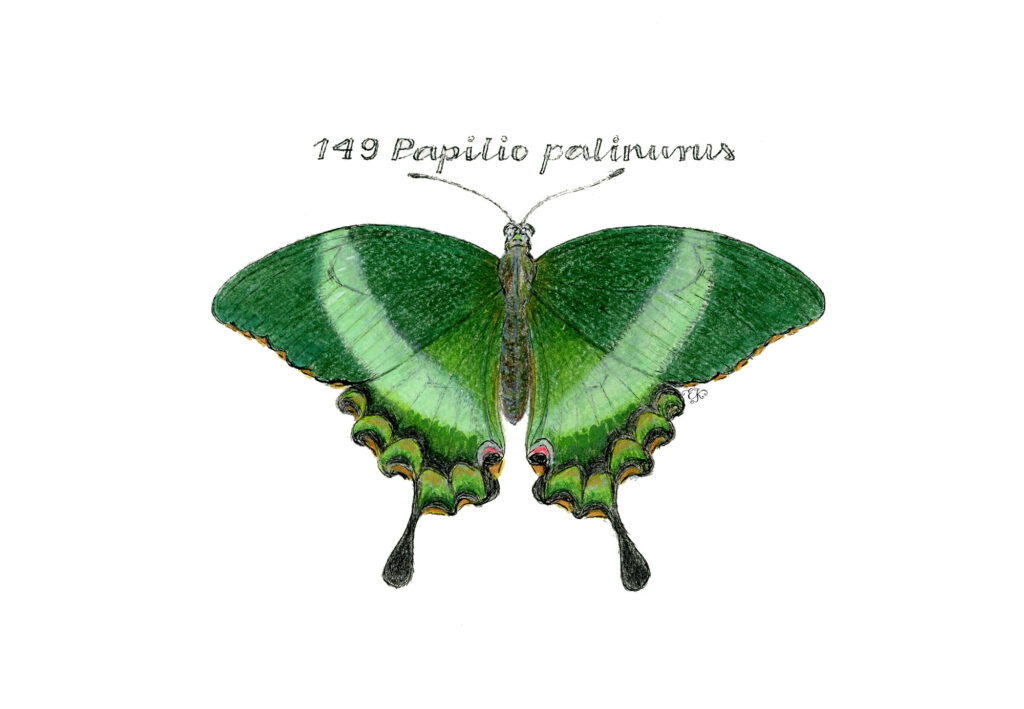
Papilio palinurus is one of the few butterflies with a green color. Mainly found in Southeast Asia. Its wingspan is 8-10 cm. The color of the wings varies from dark green to almost black, with wide, light, emerald green metallic stripes. The rear wings end with characteristic beautiful decorative tails.
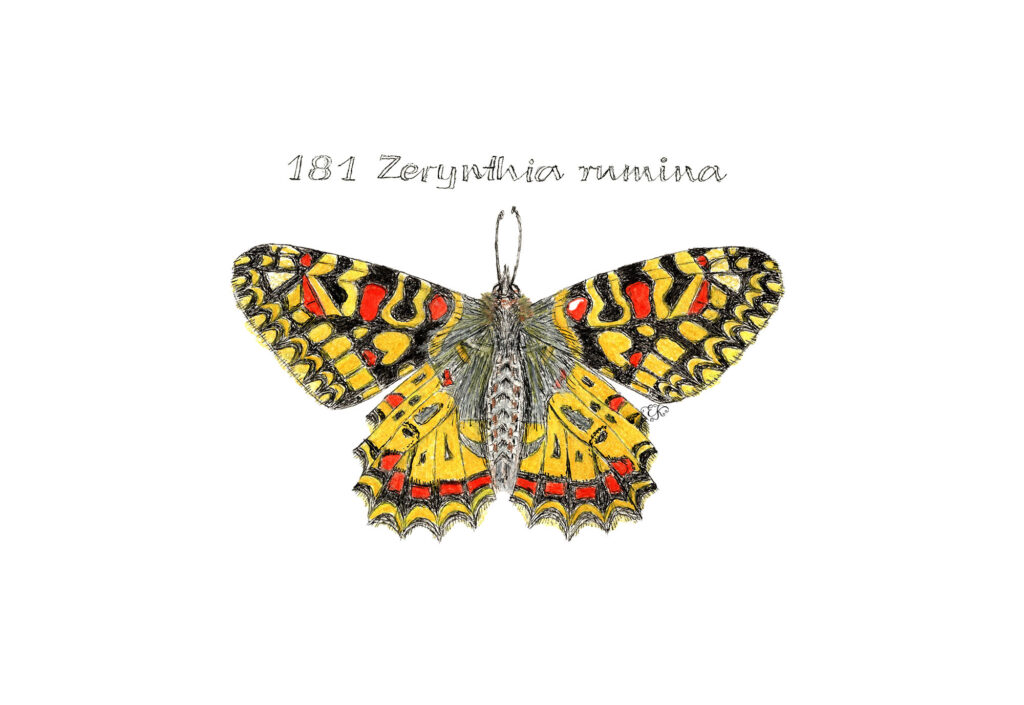
Zerynthia rumina is an extremely exotic butterfly with an intricate pattern on its wings. The wingspan of this butterfly is 4.5 to 5 cm. Males and females are similarly colored, only the colors of females are darker. They are mainly found on the rocky slopes of the hills in southeastern France, Spain, and Portugal. They can often be found along the coasts. This characteristic butterfly has a difficult but very clear drawing of the body, which in each butterfly is divided into three parts: head, torso, and abdomen.
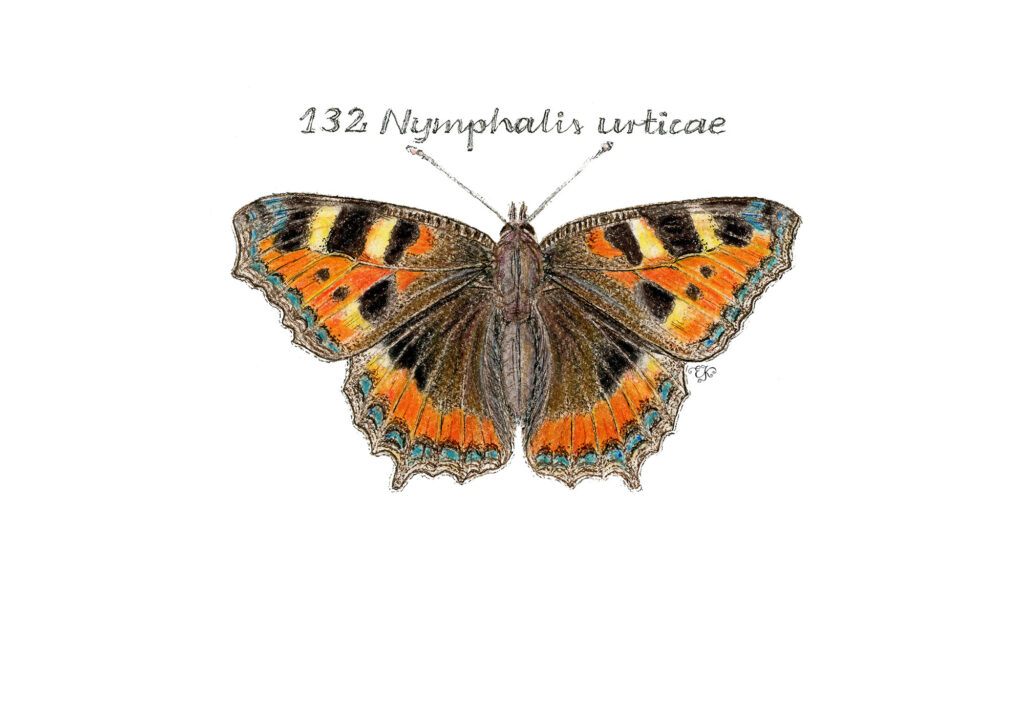
Nymphalis urticae is one of the most common European daytime butterflies with a wingspan of 4.5 – 5 cm. It is beautifully brightly colored. Females are similar to males. They are found throughout Europe, as well as in the temperate zone in Asia, up to Japan. I saw this butterfly many times, both in spring, summer, and early autumn, because its colors stood out among the colorful nature. Back then, I always thought of sensitive artists, painters, musicians, and poets whose beautiful nature inspires creativity.
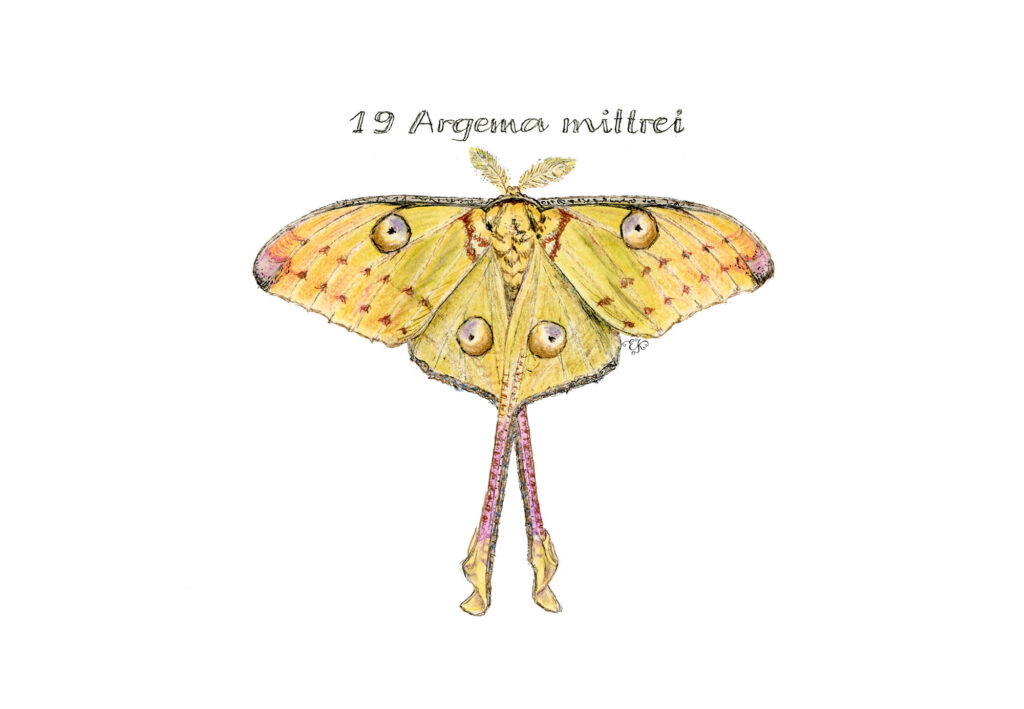
I was wondering which moth I should introduce to you first and I decided. The beautiful Argema mittrei (on the watercolor above Argema mittrei female, Argema mittrei male has much longer lower wings), the Madagascar moon moth, often charms like a delicate ballerina, arranging herself as if to dance. The male’s wingspan can reach 20 cm. It is found only in the rainforests of Madagascar, which separated from the continent allowed the native fauna and flora to evolve in relative isolation. Consequently, Madagascar has a very rich ecosystem; more than 90% of wildlife does not exist anywhere else on Earth. Won’t man spoil it?
Text and watercolor crayon drawings Ewa Kotus
the famous peacock – Nymphalis io – is presented next to the title
